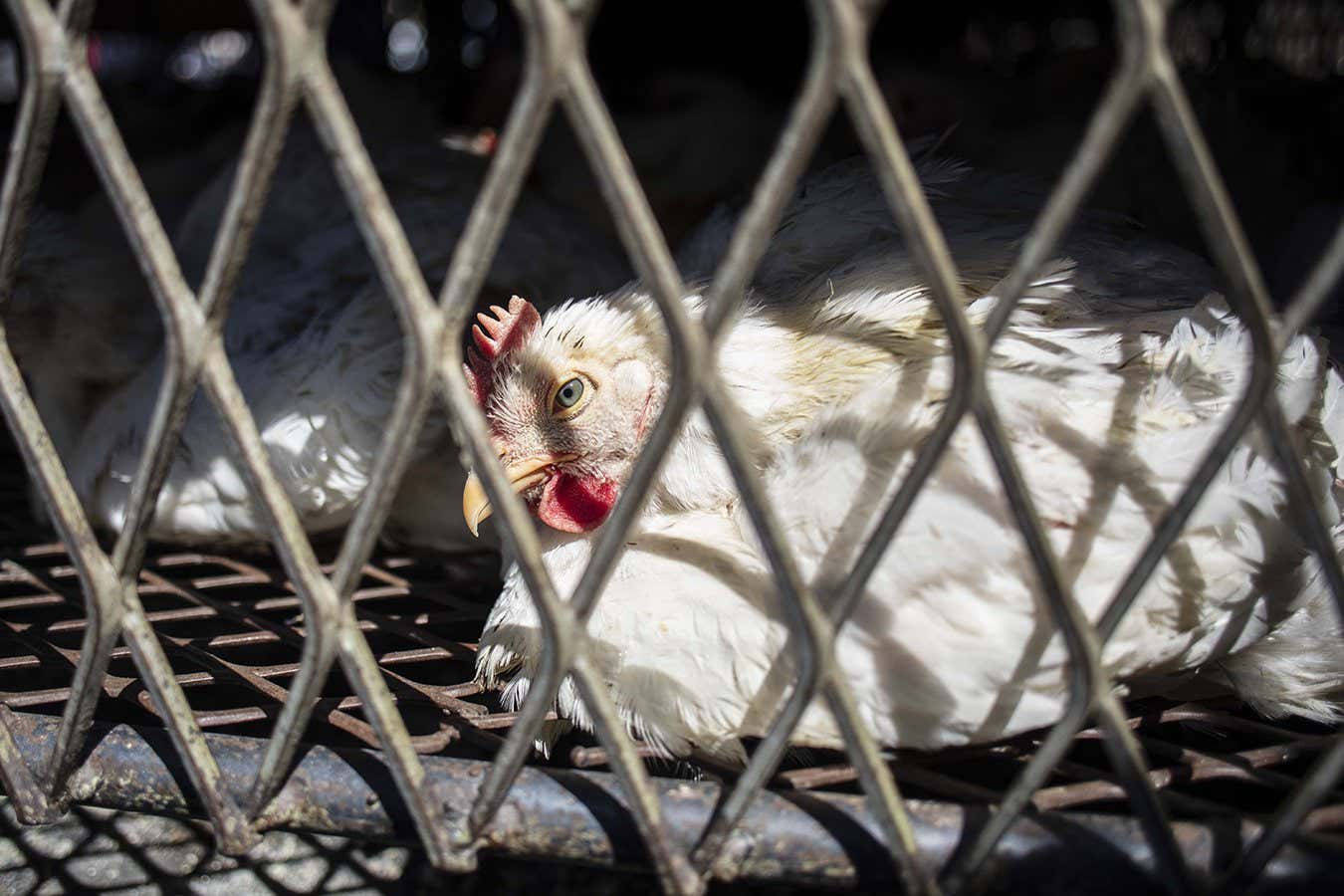A chicken on sale in a market in South Africa – one of many countries where bird flu is killing wild and domestic birds
Kim Ludbrook/EPA-EFE/Shutterstock
The largest-ever bird flu outbreak is caused by a virus that originated in Europe and Africa, signifying a shift in the epicentre of bird flu viruses away from Asia to other continents.
Since 2021, a subtype of the bird flu virus known as H5N1 has been infecting and killing a significant number of domestic and wild birds worldwide. H5N1 was first identified in China in 1996 and was predominantly confined to South-East Asia until 2005. However, in 2005, outbreaks occurred in birds across Africa, the Middle East, and Europe. In 2021, the H5N1 virus re-emerged and affected birds in North America, Europe, Asia, and Africa. There have also been a few cases of transmission to humans and other mammals.
“Something is different about the mid-2020 and onward viruses than anything we’ve seen since the 1996 detection,” says Richard Webby, an expert at St. Jude Children’s Research Hospital in Tennessee. “So just a huge amount of virus in wild birds, like nothing we’ve seen before.”
To investigate the recent spread of H5N1, Webby and his team analyzed bird flu outbreaks between 2005 and 2022. They gathered data on confirmed bird flu cases worldwide from the Food and Agriculture Organization of the United Nations and the World Organisation for Animal Health. Genetic information on bird flu viruses was obtained from two public databases.
Through genetic analysis, the researchers traced the H5N1 virus responsible for the 2021 outbreaks and onwards to another subtype of the bird flu virus called H5N8. H5N8 initially emerged in Northern Africa and then spread among wild European birds in 2019. In Europe, it evolved into the current H5N1 virus, which subsequently spread among wild European birds for at least a year before causing widespread outbreaks in domestic and wild birds in numerous countries in 2021.
“This signifies a major change for this particular virus,” explains Webby. “The epicentre of H5 evolution, which has traditionally been South-East Asia, is now shifting.”
This finding highlights the importance of increasing bird flu surveillance efforts in countries where infrastructure is lacking, particularly in Africa, says Webby.
According to Seema Lakdawala, an expert at Emory University in Georgia, careful vigilance is crucial for monitoring the circulation and evolution of bird flu viruses. This information can guide vaccine development and efforts to control the transmission of bird flu. “By understanding what is out there, we can prepare ourselves,” Lakdawala says.
Currently, bird flu cannot transmit between humans. Humans can only contract the virus through direct contact with infected animals. Therefore, increased surveillance is essential in alerting people in affected areas about the importance of avoiding contact with sick birds and other animals, such as seals, foxes, and bears, that may carry the bird flu virus. Each human infection provides an opportunity for the virus to mutate and potentially develop the ability to transmit among people. “If we can identify the spillover locations and minimize spillover in humans, we can reduce the potential for a pandemic emergency,” says Lakdawala.
Topics:








